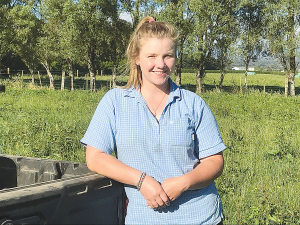2024/25 Dairy Statistics: NZ dairy farmers boost production with fewer cows
According to the New Zealand Dairy Statistics 2024/25 report, New Zealand dairy farmers are achieving more with fewer cows.
 Stratford farmer, Kelsey Thompson, says the power of Minda Live and the app is all she needs on-farm in terms of information requirements to manage her herd.
Stratford farmer, Kelsey Thompson, says the power of Minda Live and the app is all she needs on-farm in terms of information requirements to manage her herd.
Farmer-owned co-operative LIC says its herd management system Minda Live and its corresponding app has evolved over the past year with more than 60 improvements added based on farmer feedback.
As a result, use of Minda Live and the Minda app has increased significantly, says the co-op. More than 8,500 farmers are now using Minda Live, and 10,000 farmers and their staff are using the Minda app to record animal events and access their data to make informed decision on-farm.
Kelsey Thompson, a Stratford-based farmer and Minda user, says the power of the system is all she needs on-farm in terms of information requirements to manage her herd of 170 Holstein-Friesians and make recording simple this calving.
"It's so easy because you can do what you need to on-the-spot, on the farm, in the cow shed; it's all done in one go - and that includes your matings, your calvings, and any health treatments. Last spring I recorded all my matings, every day, straight into my phone, and then it was updated in Minda Live when I got home every day. It's very simple.
"During calving I still use the yellow notebook a bit, but I transfer the information straight to the app in my phone, then it automatically goes through to Minda Live."
Kelsey believed it was a matter of diving-in and getting used to the software, most of which was intuitive.
“It’s one of those things that as you get used to things it just gets easier and easier. This season I got my Mum into it – she was a huge user of Mindapro – and now she pretty much only uses Live.
“LIC keeps updating the software too, which helps – little things get refined to make the reports better and information more relevant.”
Jessica Bedford, LIC Minda product experience manager, said development work had been critical to ensure farmers were well-placed as the impending 2021 calving and mating periods approached.
For the upcoming calving period, there were several reports and groups that would be handy to create, Jessica said. “When it comes to groups, some of the key pieces of data farmers could use are the expected calving attributes; these will help identify animals that are expected to calve either early or late, or, for example, animals that are expected to calve to the short gestation matings.
“These groups will share with your Minda app to ensure you have the right information on hand to make drafting a breeze.
“For those that prefer paper-in-hand, the Expected Calving by Date or Expected Calving by Cow reports will show the animals’ expected calving information,’ says Jessica.
Bradley Wadsworth lives on the family farm – Omega Station – in the Wairarapa about 30 minutes’ drive east from Masterton.
With global milk prices falling, the question is when will key exporting countries reach a tipping point where production starts to dip.
Rural contractors want the Government to include a national standard for air plans as part of its Resource Management Act reforms.
The biggest reform of local government in more than 35 years is underway.
An industry-wide project led by Ministry for Primary Industries (MPI) is underway to deal with the rising number of feral pests, in particular, browsing pests such as deer and pigs.
Three New Zealand agritech companies are set to join forces to help unlock the full potential of technology.